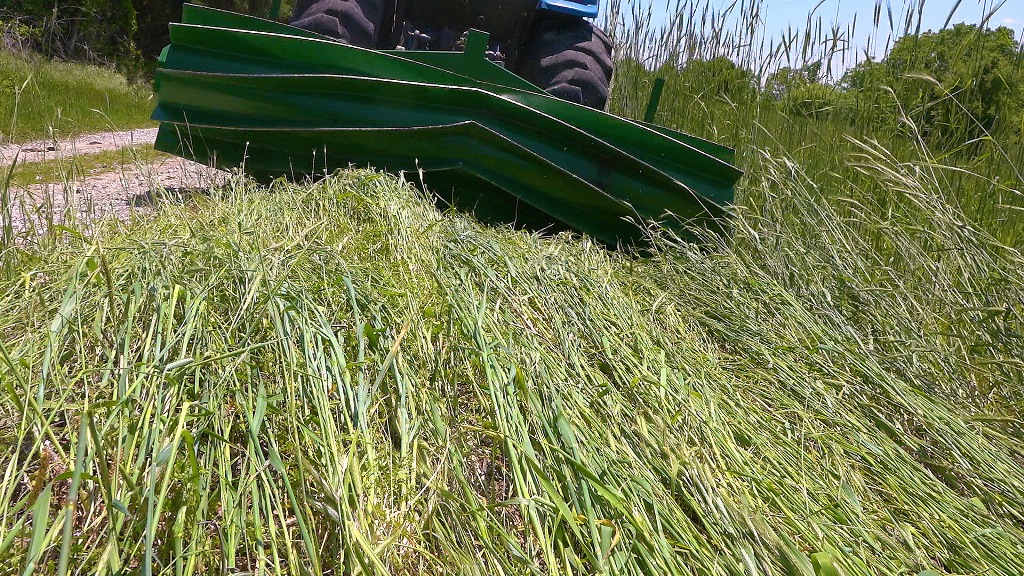The Benefits Of Roller Crimping
Filed under: Food Plots, Hunting Blog
Earlier this week I was turkey hunting in Kansas. As my hunting partner and I drove around looking for toms on public land, I noticed that many farmers had begun preparing for planting season. There were one or two farmers that gambled on good weather and had already put seed in the ground several weeks earlier. Everyone else was just starting to spray or work their fields.
As we walked across some large ag fields in search of toms, I couldn’t help but notice how bare and dry the soil was. I picked up several clumps of dirt and with a slight squeeze watched as they fell apart. Not ideal soil. On top of that, I noticed erosion. Even in fields that had been terraced (designed and built to reduce erosion) and planted with the contour of the land, there were signs of water erosion.
During the hunt, I couldn’t help but compare my observations in Kansas to those at The Proving Grounds. There was one obvious difference, the use of cover crops.

The roller crimper lays the winter rye down while crushing the stem, terminating the crop without the use of herbicide.
The soil at The Proving Grounds is never left uncovered. Last summer we mixed winter rye into Eagle Seed Broadside for a fall food plot blend. The winter rye has grown very well and helped hold moisture in the soil. We had several torrential rainfalls that eroded our roads but left our food plots unscarred. Our soil is still intact and healthy.
Like many farms we are preparing for planting, only we will be planting small summer food plots. We too will terminate the vegetation in our fields (in our case the winter rye) before we plant Eagle Seed soybeans. We terminate the rye to reduce the soybeans’ competition for nutrients, water, etc.
Unlike the farmers I watched spray weeds, we do not have many weeds in our plots. The winter rye has kept weeds from growing. One great thing about using the winter rye to protect our fields from erosion and weeds is that we are able to terminate the rye without the use of herbicide. We simply use a roller crimper.
A roller crimper, like a traditional roller, will lay the vegetation down. However, the addition of the crimper’s angled metal outcroppings will break the stem on the rye. By breaking the stem, the rye can no longer carry water or nutrients throughout the stalk and dies. This dead vegetation is now left on the soil and becomes a slow releasing fertilizer building organic matter and creating a layer of mulch that protects the soil from erosion, moisture loss, and weeds. The process of roller crimping replicates what large herds of buffalo did on the great prairie years ago as they trampled the native vegetation. This is exactly what created the soil that farmers in Kansas and other states now benefit from.
Though I was unsuccessful tagging a tom in Kansas, the trip was a gentle reminder of the differences in land management practices. As land managers, we can have great benefits (healthier soil) and cost reduction (reduced herbicide and fertilizer) by how we chose to manage our food plots this spring. Stay tuned this growing season as we keep you updated on our food plot management techniques!
Enjoying Creation,
Daniel Mallette



